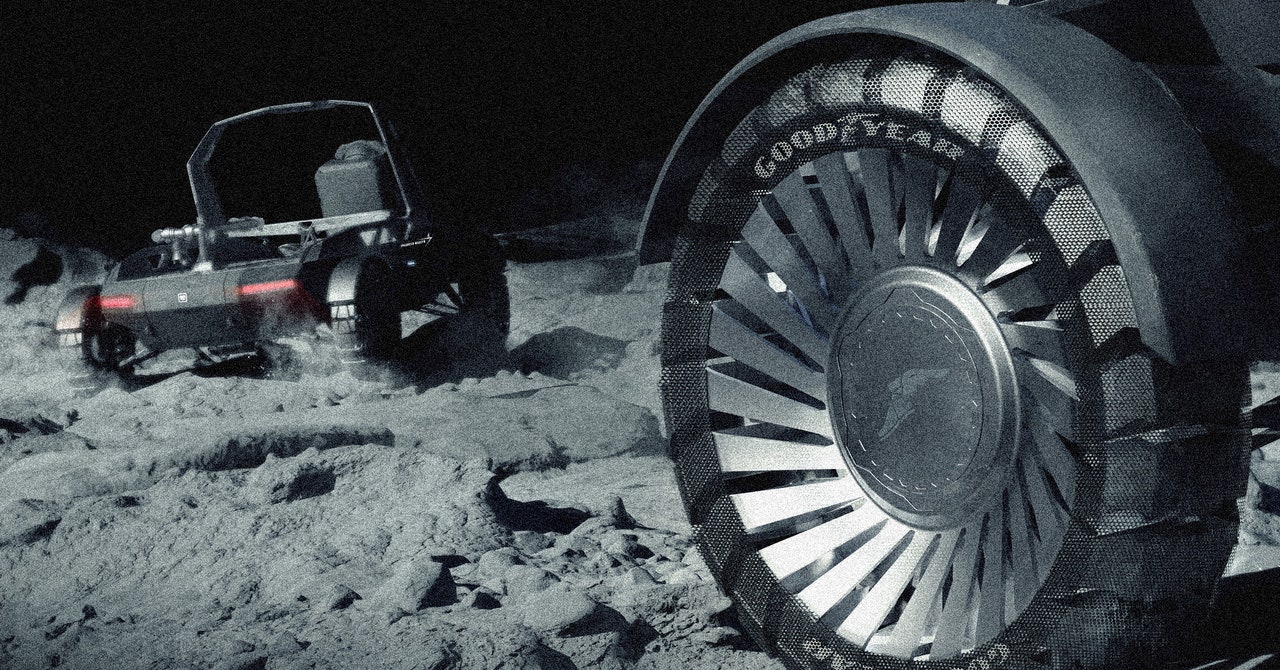
In 2030, about six years from now, American astronauts will return to the floor of the moon. Once they land, they’ll face the identical problem as hundreds of thousands of freshly licensed youngsters the world over: They’ll want a candy journey.
The lunar mission, referred to as Artemis V, is slated to ship two astronauts to the lunar floor to conduct six days of science experiments on the moon’s south pole. To do the job, NASA is commissioning them a set of wheels—emphasis on wheels.
This spring, NASA introduced that three teams had been chosen to hold out year-long research of what it’ll take to develop a Lunar Terrain Automobile, or LTV. The teams, two of that are a consortium of corporations, included two tire corporations: Goodyear and Michelin. The opposite competitor, Venturi Astrolab, has debuted its personal lunar wheel design.
The contract finalist will possible be introduced in a couple of 12 months, and whoever goes on to design the LTV will face some critical challenges. NASA has requested that the rover not solely be able to roll with two astronauts on board, but additionally to remain behind on the moon for years to carry out scientific experiments and business work, even with out people current.
Stick your normal rubber automobile tires on the moon—particularly at its south pole in the course of the lunar night time, the place temperatures can attain –300 levels Fahrenheit—and nothing good will occur. The tires will sink into the unfastened lunar soil, and the extraordinary photo voltaic radiation on the moon, which lacks a protecting ambiance, will immediately start to interrupt down the rubber. Then the acute chilly will freeze the tires, rendering them unable to deform or compress, and making them more durable to roll. They’ll get brittle and shatter.
The problems solely worsen over time. The moon’s soil, or lunar regolith, is additional abrasive, says Florian Vilcot, an innovation professional and designer at Michelin. That abrasiveness threatens to shortly tear up any unequipped materials. That’s significantly essential for the LTV as a result of Michelin is designing a tire to final 10 years and journey greater than 6,200 miles. (By comparability, the Lunar Rover Automobiles or “moon buggies” concerned within the Apollo missions within the early Nineteen Seventies every traveled about 18 miles.)
Moreover, NASA paperwork outlining the required specs of the LTVs be aware that whereas the company doesn’t plan for the car to leap, “there will likely be momentary unplanned situations” the place a wheel simply may need to go away the floor of the moon.







